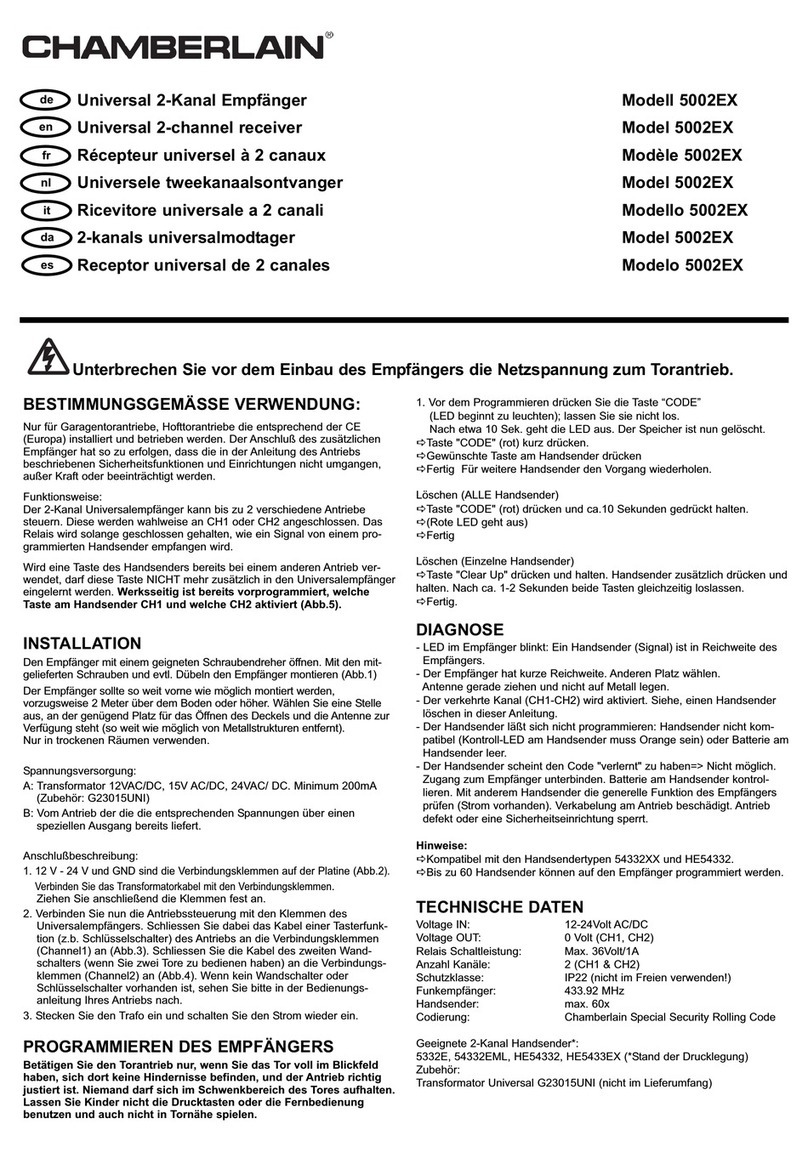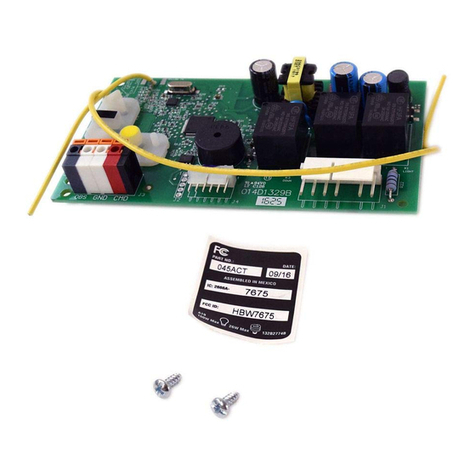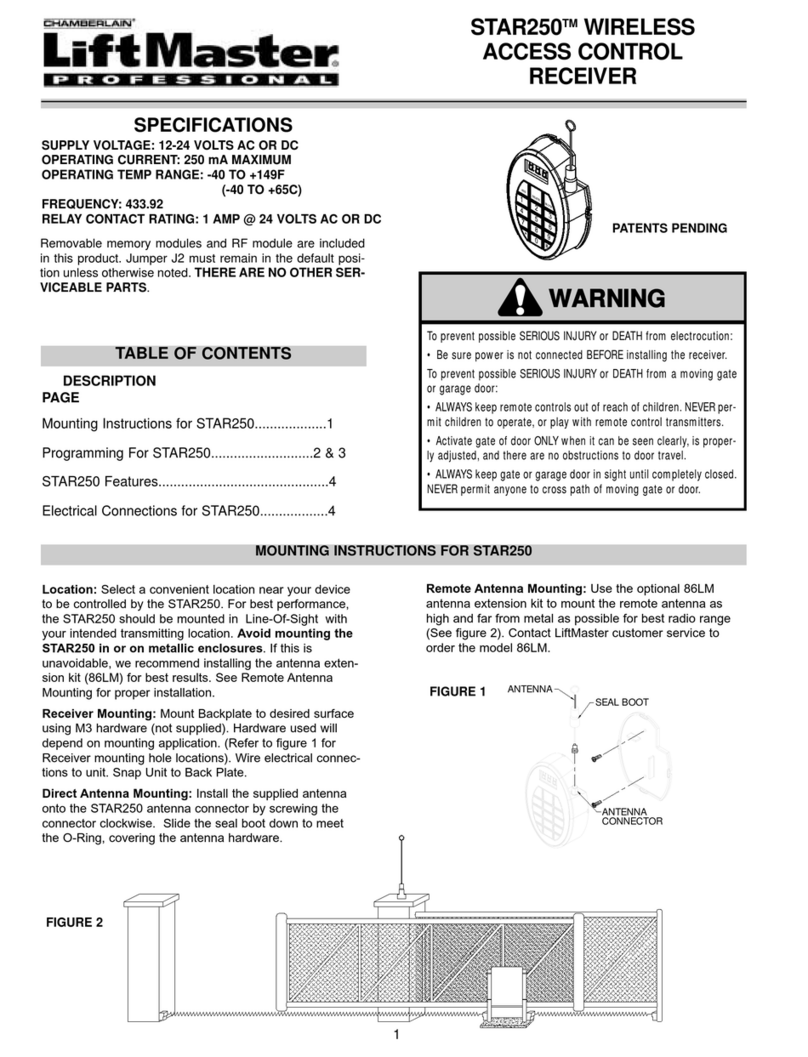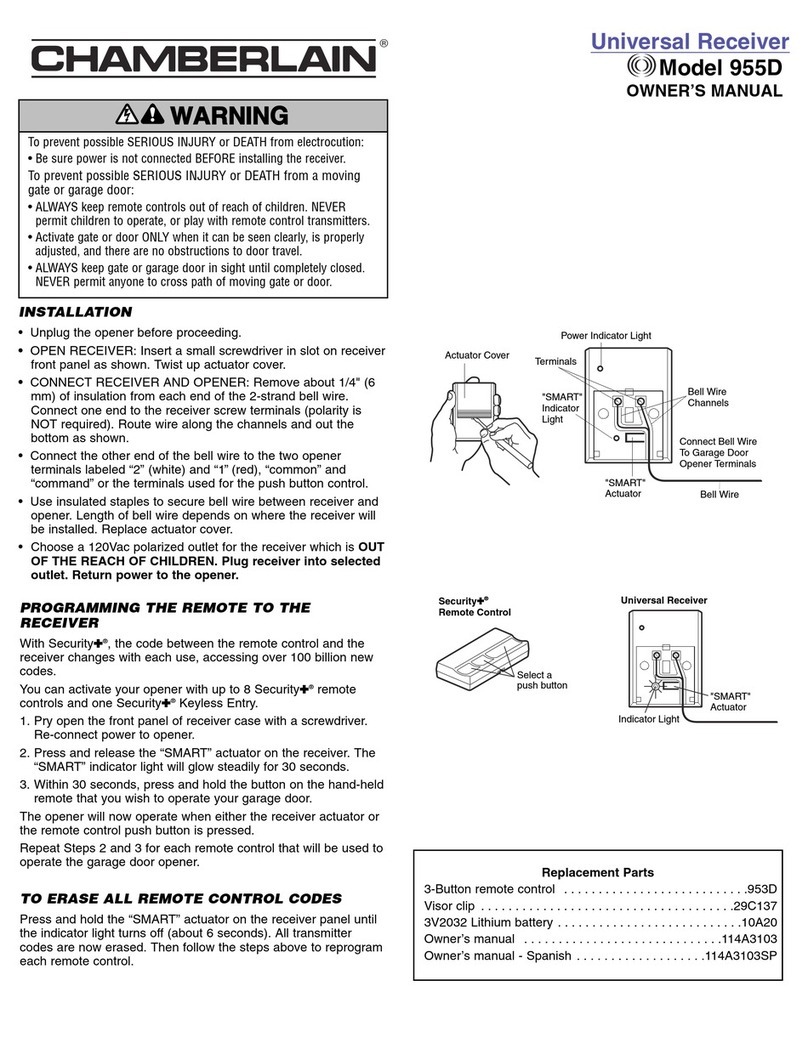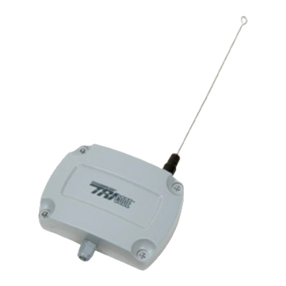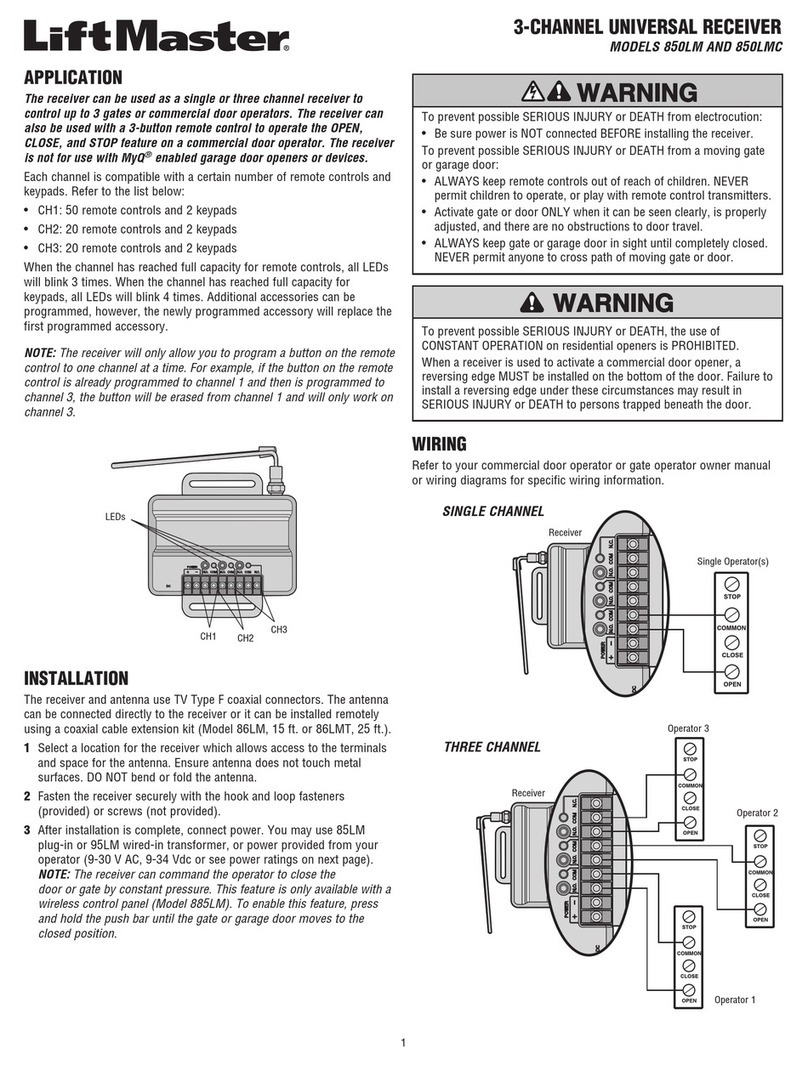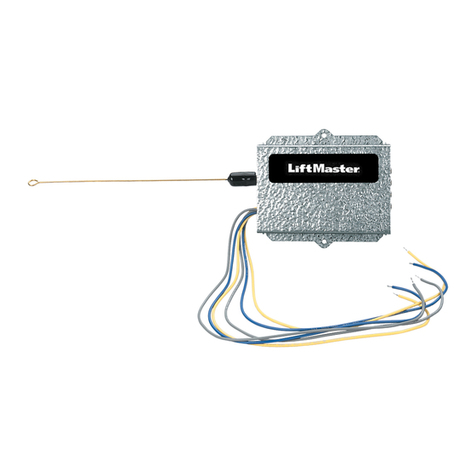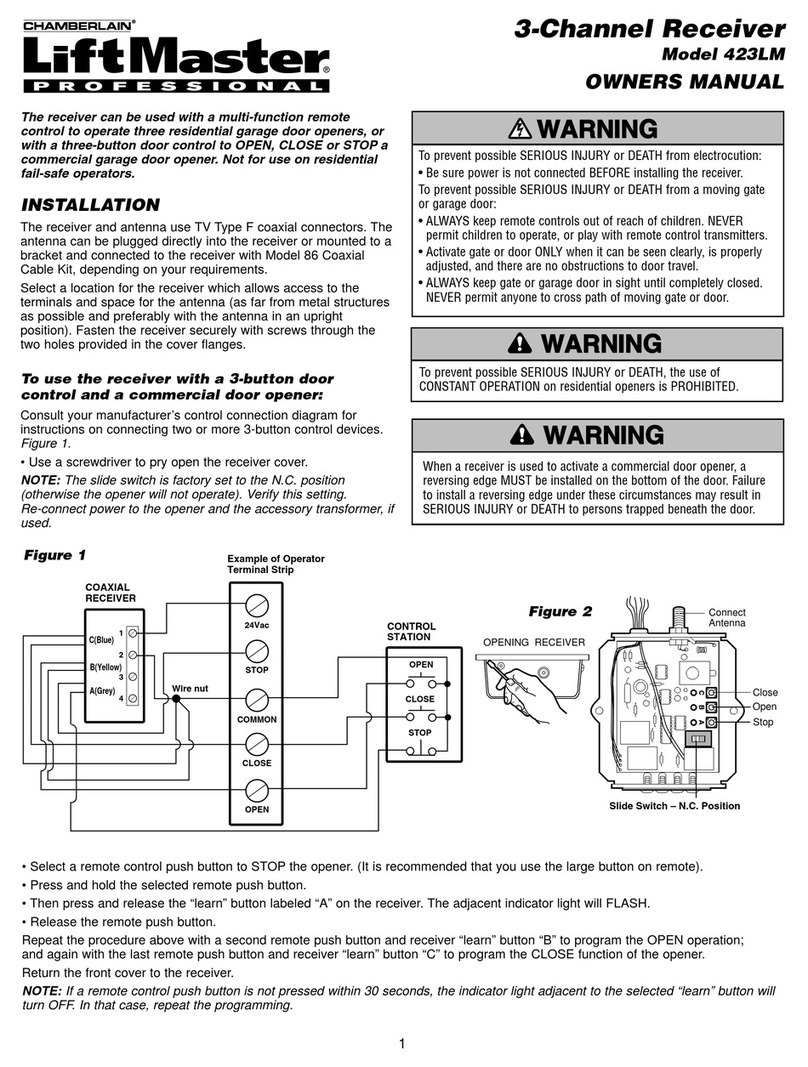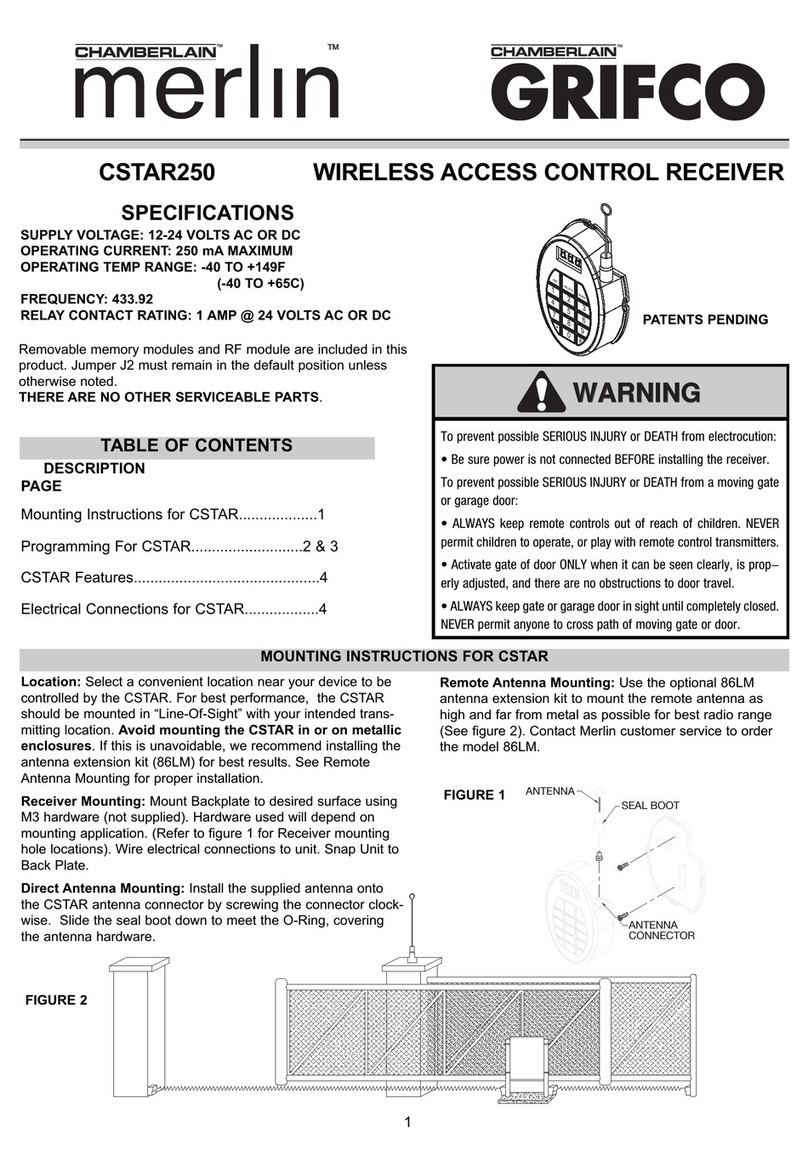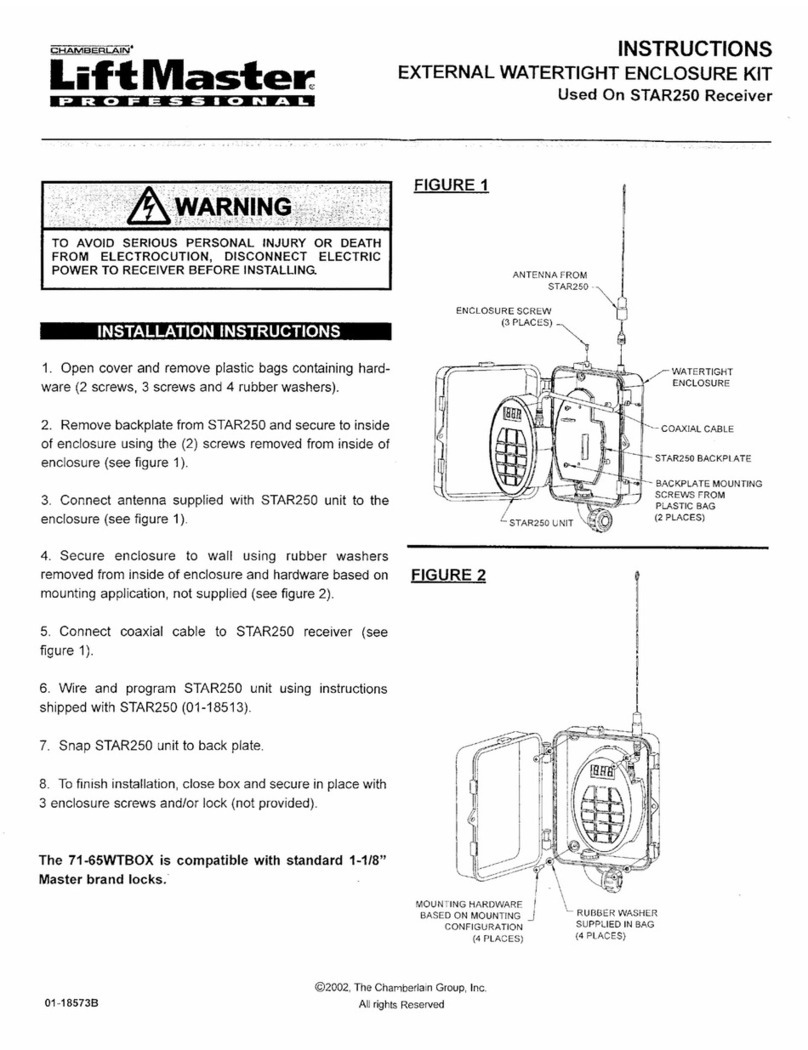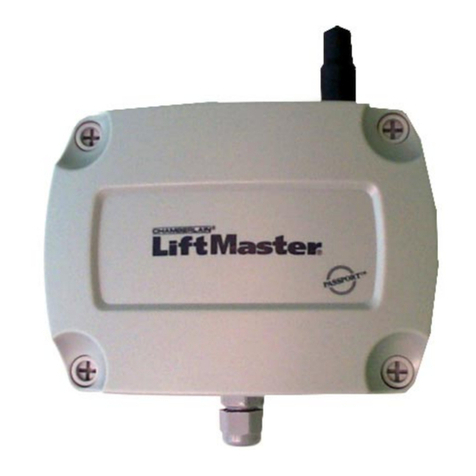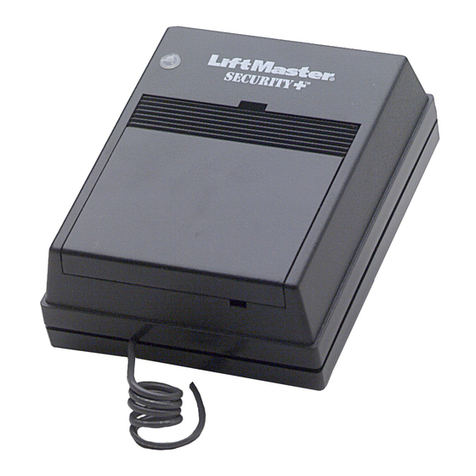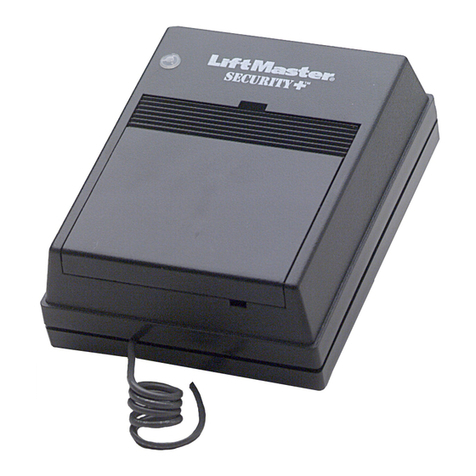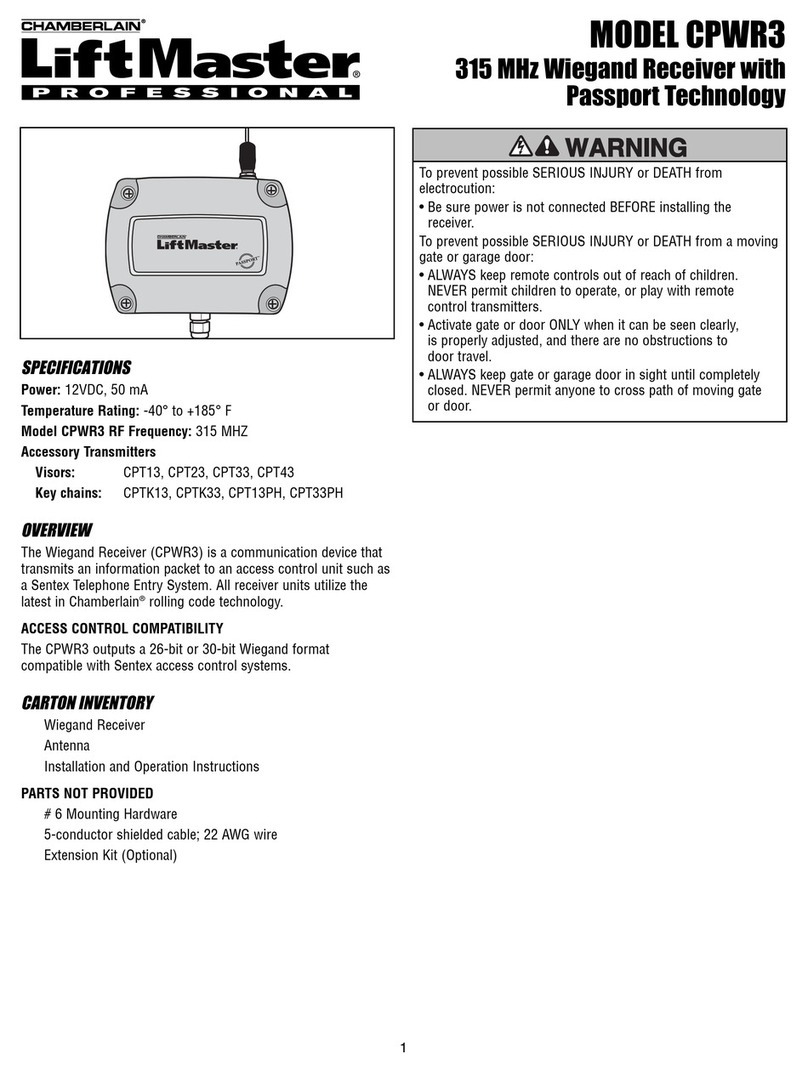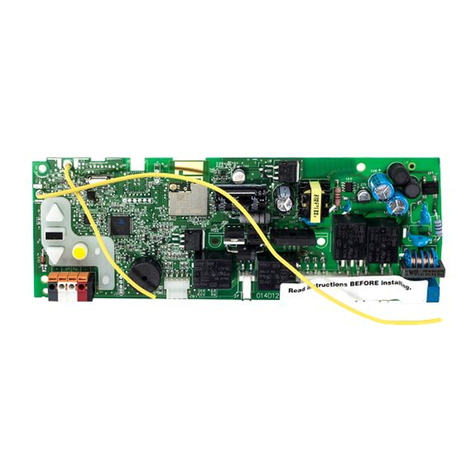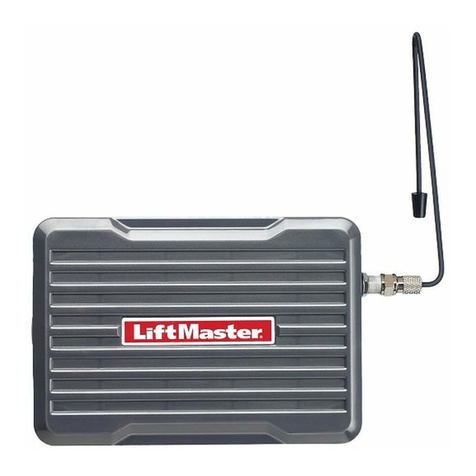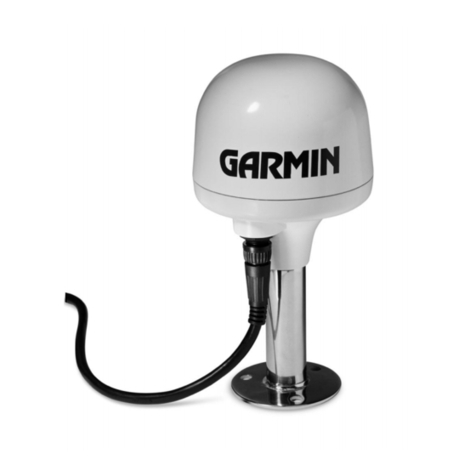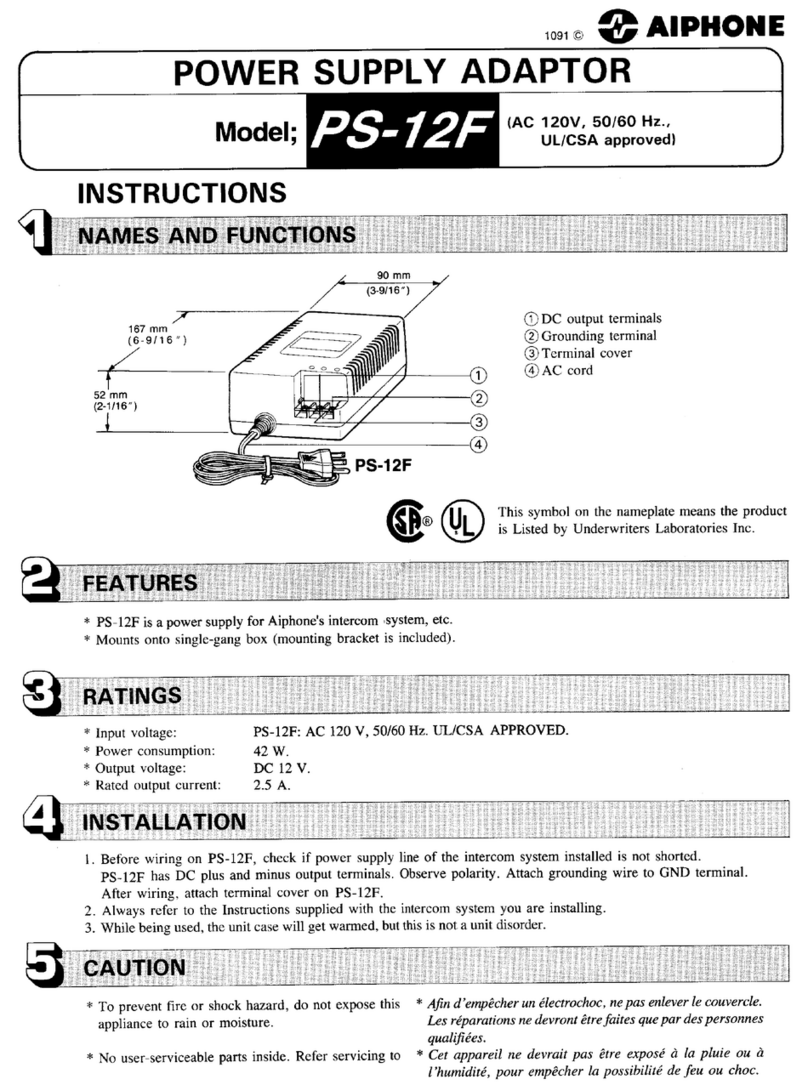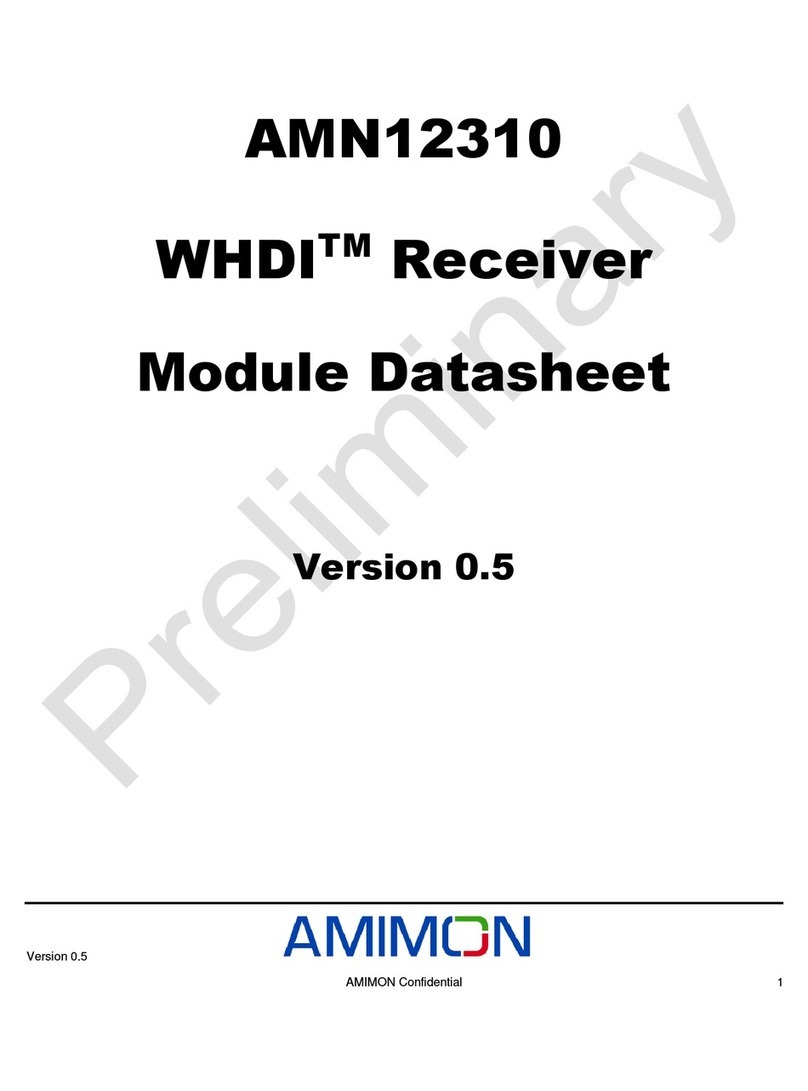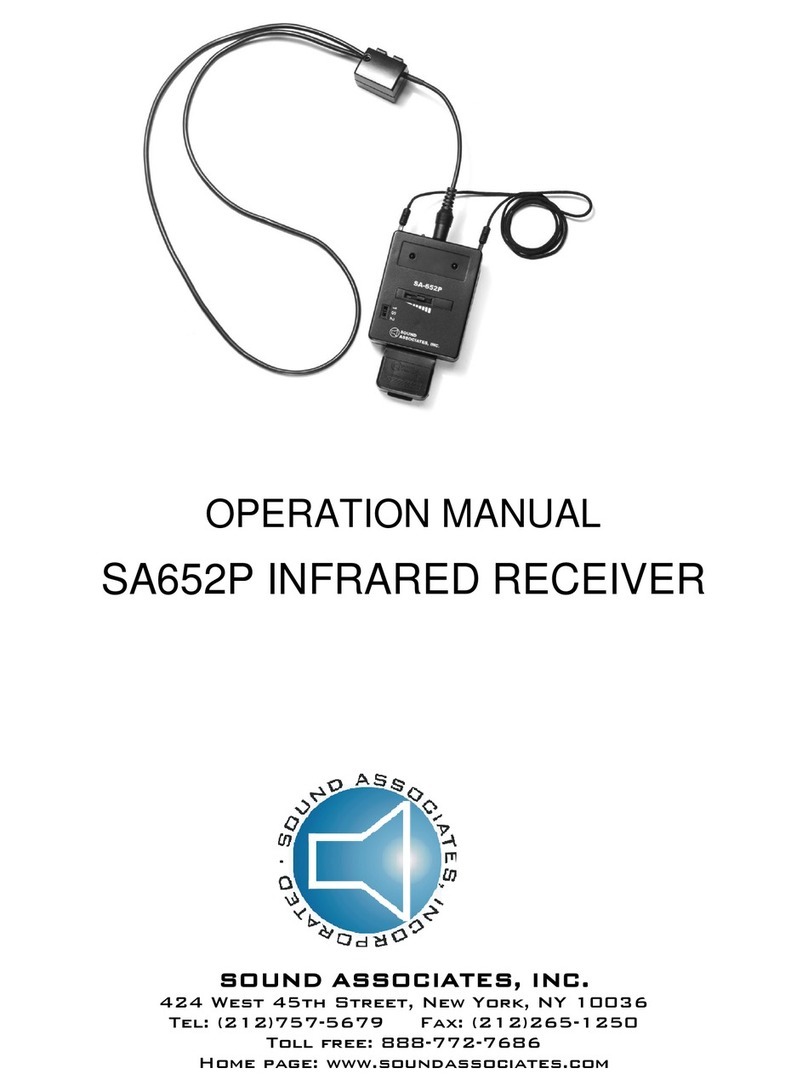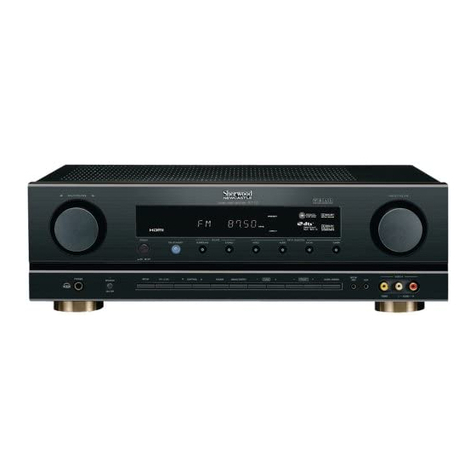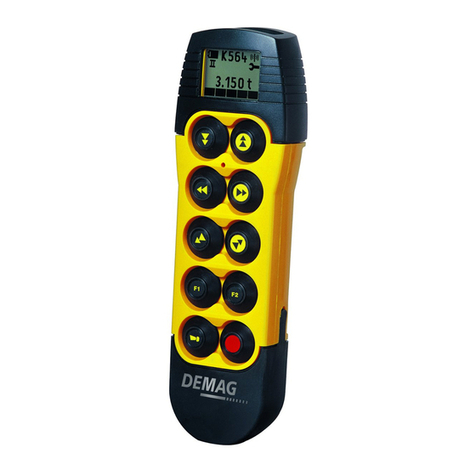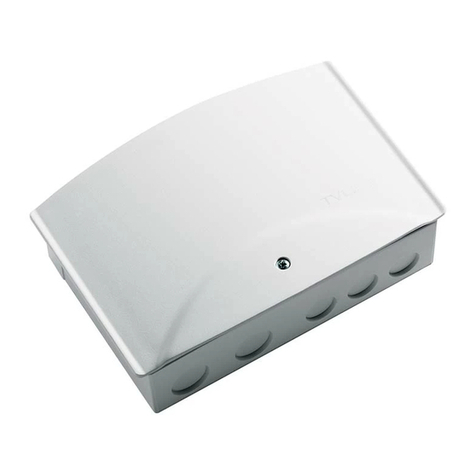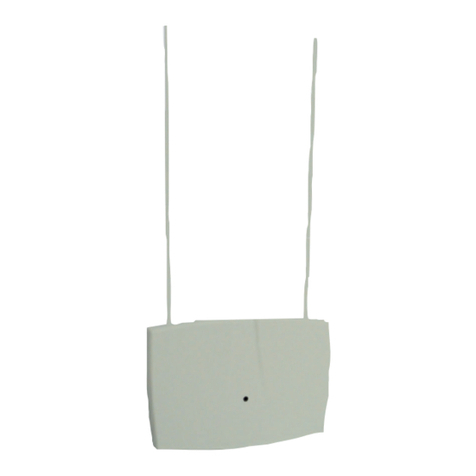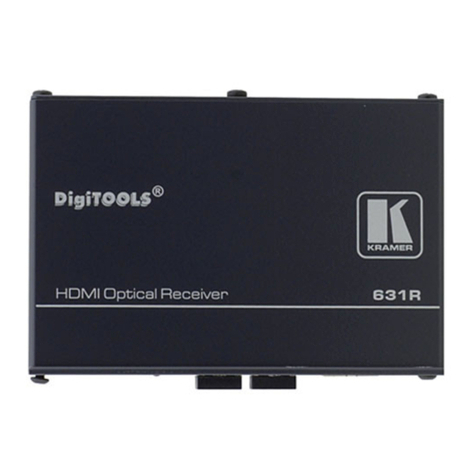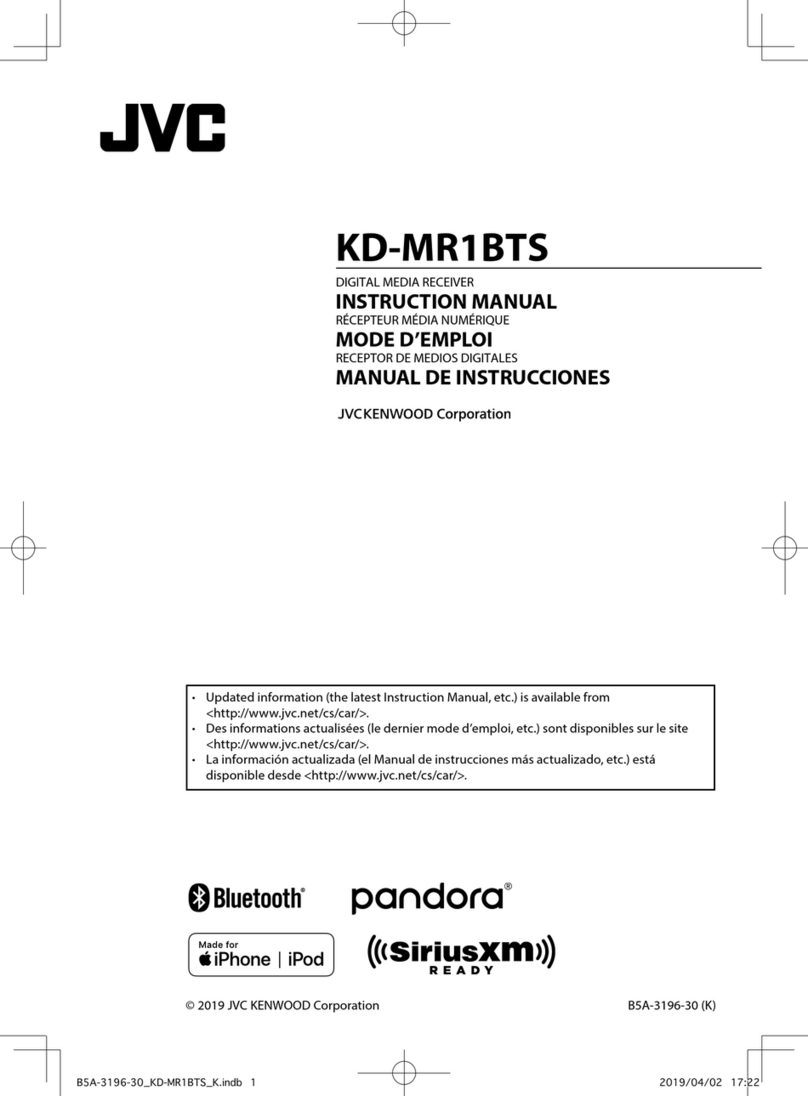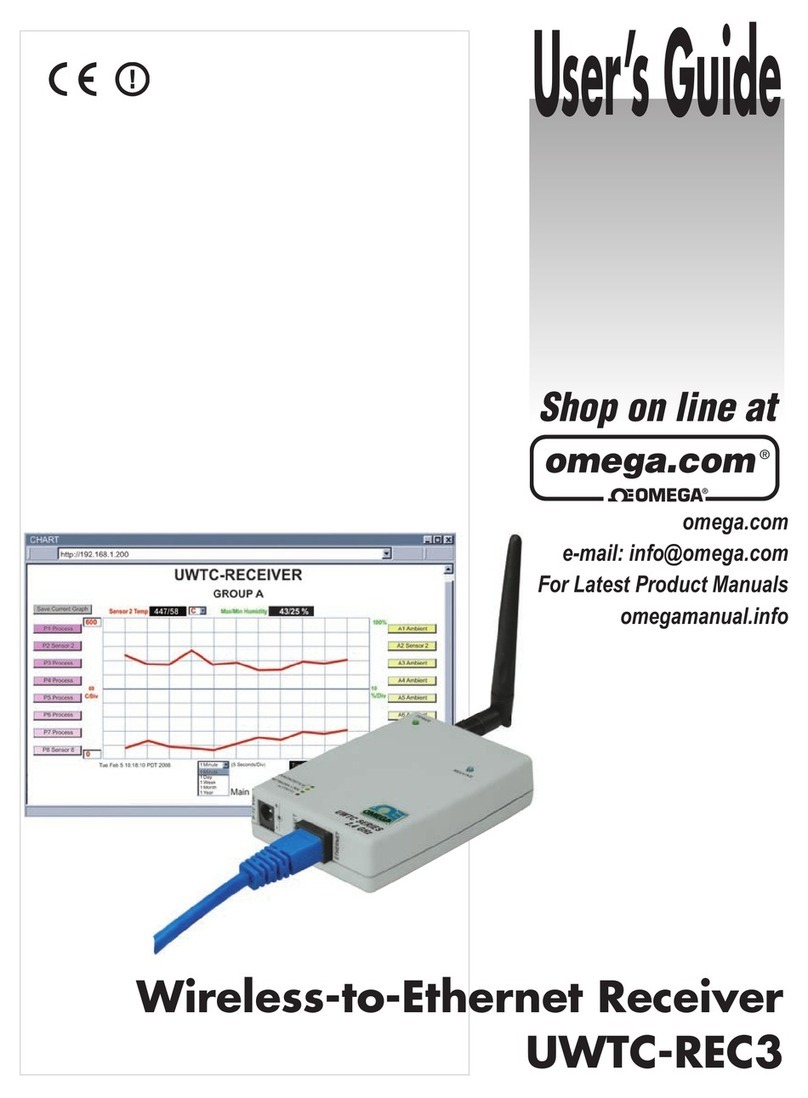
TriCodeTM
TCR1 Single Channel Receiver
The TriCodeTM digital receivers are designed for use
with automatic garage/gate operators and access
control systems. All TriCodeTM products may be
matched with Linear/Delta-3TM, Multi-CodeTM, and
StanleyTM radio products which may already be
installed.
The TriCodeTM radio format provides a potential of
1024 different digital codes. For Linear/Delta-3TM
compatible products, 256 different digital codes are
available. The codes are set using 10-position DIP
switch system.
U.S. Patent Pending
SPECIFICATIONS
Output Rating: 5 Amps 28VAC or DC Max.
Power: 12VDC or 18 to 34VAC/DC, @ 30ma
RF Frequency: 300 or 310MHz
Accessory Transmitters:
TC1, TC2 and TC4
Children operating or playing with a garage door
/gate opener can injure themselves and others.
The door/gate could close and cause serious
injury or death.
Do not allow children to operate
the door control push button or the remote
control transmitters.
Install the receiver (and all door control push
buttons) out of the reach of children and away
from all moving parts of the door and door
hardware, but
where the door/gate is visible.
Disconnect power to opener before installing
receiver or removing/replacing receiver cover.
This device complies with FCC Rules Part 15 and IC
Canada Rules and Regulations. Operation is subject
to the following two conditions: (1) This device may
not cause harmful interference and (2) this device
must accept any interference received, including
interference that may cause undesired operation.
F.C.C. rules prohibit adjustments to or modification of
receiver and/or remote control transmitter circuitry
except for changing the code setting and replacing
remote control transmitter battery. THERE ARE NO
OTHER SERVICEABLE PARTS.
INSTALLATION AND SERVICE INFORMATION ARE AVAILABLE
6 DAYS A WEEK CALL OUR TOLL FREE NUMBER
1-800-528-3536
HOURS 7:00 TO 3:30 p.m. (Mountain Std. Time)
MONDAY Through SATURDAY
OR CONTACT US THROUGH THE WEB AT
WWW. CHAMBERLAINGROUP.COM
TABLE OF CONTENTS
DESCRIPTION PAGE
Setting Power Supply Selection..........................2
Setting Output Relay Mode.................................3
Setting the Configuration Switch.........................3
Setting DIP Switch...............................................3
Power Supply Connections.................................4

